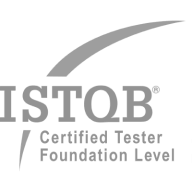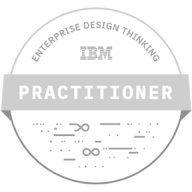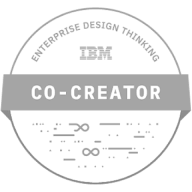
Want to know more? — Subscribe
Digital transformation in education plays a vital role in providing high-quality education and equal opportunities to learners all over the world. Since the outbreak of the COVID-19 pandemic, over 1.5 billion students have switched to online education. To make the learning process smooth and seamless for every student, educational institutions and governments develop digital transformation plans and implement necessary changes.
Education is one of the world’s single largest industries, making up more than 6% of GDP. It is expected that the global spendings will nearly double in the next five years, reaching $404 billion by 2025. In many ways, this contributes to the impact of digitalization on education.
The impact of digital transformation in education is that it helps to improve the learning experience for both students and teachers, as well as other people involved in the process. Such changes focus on improving engagement and accessibility through interactive and customizable learning. As a result, online education gets cheaper, more comprehensive, and more inclusive.
Some of the opportunities that digital transformation in higher education enables are micro-lessons, interactive videos or tests, and even games or AI-based learning methods. All these options help a student get more involved in the process and interact with respective elements or tasks. People with disabilities also get an education with no barriers or difficulties thanks to text-to-speech or colorblind-friendly visualization, for example.
Digital transformation for educational institutions is a huge step forward in enhancing the learning process and automating plenty of operations: from printing countless essays and coursework to evaluating tests and calculating the GPA. If you have thought of launching digital transformation processes in your company, Softermii can help you out. With over seven years on the market, we can bring change to your business despite its size and industry.
Key Areas of Digital Transformation in The Education Industry
What are the advantages of digital transformation in education? Some benefits are not so obvious, but still worth noting. So, let us show you some of the critical areas where you can digitalize the learning process.
Managing admissions
Uploading your enrollment application to universities or schools offline is lengthy and tiring. Submitting them via a unified digital education system will be much more convenient. You pick all the institutions of interest and send the respective documents at once. This is a time-savvy option that wouldn't just accept your documents but also process them faster.
Minimizing risks
Whether a child is sick or the classes were canceled due to harsh weather conditions, online learning can handle it all. Now, to maintain excellent attendance rates and not miss an important lesson, you can simply click on the "Join" button of the meeting tool or just read through the material uploaded on the cloud.
Improving learning outcomes
With interactive lessons and implementing high-tech solutions, you can motivate students and, as a result, improve their learning skills. The more attention they pay to what's going on, the more relevant information they'll be able to absorb at once.
Evaluating performance
The process of digitalization in education offers a lot of benefits for students, such as faster access to tests and grades through online systems. E-learning systems allow to submit papers, do instant plagiarism checks, and track attendance. All these factors form students' performance levels that you can easily measure via a digital platform.
Top Digital Transformation Trends in Education for 2023
Digital innovations in the education sector are evolving and constantly developing. There's a clear pattern for implementing particular systems among many educational institutions. Let's have a look at the most popular trends.
Internet of Things
The Internet of things can bring a lot of change to both online and offline learning processes. Thanks to this, colleges and schools can create smart campuses, automate many repetitive tasks, and give everyone access to high-tech tools that facilitate the student's life.
Blockchain
It is quite a convenient option for storing the personal data of the staff and learners. Moreover, using blockchain technologies helps maintain security which is the main prerequisite for implementing it. Plus, the technology allows authenticity checks that reduce plagiarism and cheating.
Big Data
Big Data is a perfect option for managing vast piles of information, its organization, and analysis. In education, Big Data can help track student performance and find ways of improving the learning experience.
Read Also: Blockchain Use Cases for Real Estate
Key Technologies that Enable Digital Transformation in Education
What technologies help digital transformations take place in learning and development? We've gathered some of the main ones below!
Online classes
Distant learning has become a huge trend and opportunity for many students. Now, you can attend any college or school worldwide and stay in your room. Online meeting tools like Zoom or Google Meet enabled millions of learners to obtain the education they want, even though they don't have sufficient funds or abilities to travel.
Smart classrooms
Offline learning also gets better thanks to digitalization of education. Smart boards, projectors, access to the internet, and computers allow students to quickly get the necessary information and search for extra materials in real-time.
Analytics
Collecting grades, exam results, and other data in a unified online system allows teachers to quickly evaluate their performance, track attendance and study plan progress, evaluate papers faster and see what subjects or topics need improvement.
Artificial intelligence
Far from the last digital transformation in education, this is artificial intelligence. AI can help create custom study plans, evaluate the approximate student GPA, improve student performance, and enable more accessibility options. Plus, artificial intelligence can increase staff effectiveness and help them deliver a better educational experience. Chatbots, FAQs, and process automation can be great examples of how AI works in the education sector.
Must-have Features of Digital Transformation In Education
The digital transformation wave in education requires a holistic approach to ensure that the adoption of digital tools aligns with the goals and needs of educators, learners, and administrators. It involves choosing the right technology and incorporating specific features that make these systems more effective and user-friendly. Here's a look at these mandatory features across various systems in the education sector:
Learning Management System (LMS)
An LMS is a digital platform that supports the delivery, management, and tracking of learning experiences. It enables the organization and distribution of course content, provides tools for online testing and grading, tracks learner progress, and facilitates collaboration among learners and instructors. Additionally, a robust LMS is accessible across various devices, ensuring resources can be accessed anywhere and at any time.
Information Dashboard
It is a visual tool that presents real-time data, insights, and metrics in an easy-to-understand format. It is customizable and interactive, allowing users to delve into data details per their requirements. The dashboard also features alerts and notifications to keep users updated and incorporates security measures to maintain data privacy.
Curriculum Management
This tool aims to help design and organize engaging learning experiences that align with educational standards. They provide features for efficient lesson planning and resource allocation and tools for reporting on curriculum effectiveness and student learning outcomes. Additionally, these systems foster a collaborative environment for curriculum development among educators.
Online Chats and Video Calls
These communication tools are vital for real-time interaction in the digital learning environment. They offer high-quality video and audio capabilities for clear and effective communication. Features such as screen sharing and whiteboarding facilitate demonstrations and collaborative work. Recordings allow for revisiting lessons and catching up on missed sessions, while security measures ensure privacy and data protection.
Educational Institution Management System (ERP & HR Systems)
These comprehensive management systems automate administrative tasks, improve resource management, and simplify payroll and benefits administration. They provide analytics and reporting tools to guide decision-making and improve performance. Moreover, given their handling of sensitive data, these systems incorporate robust data security and privacy measures.
The Challenges of Digital Transformation in Education
Even though the impact of digital transformation on education is mostly positive and the benefit range is quite vast, there are still several challenges you might face on the way. Let's have a look at what can go wrong.
Lack of up-to-date systems
One of the challenges of technology in the education sector is that many educational institutions have no sufficient technology stack to transform the learning system. For example, some schools and universities still don't have computers or Wi-Fi access, and some have outdated E-learning portals. Hence, it's essential to update the technologies and the learning system first to bring any change.
No digitalization strategy
Schools and universities usually don't engage in developing education digitalization strategies too much. They either don't have time or don't know how to incorporate a particular technology. That's why they usually don't have a clear vision of what they need to change or implement. This slows down the process and doesn't bring expected results at first.
System breakdowns
Systems glitches or breakdowns can happen due to hacker attacks or technical problems (e.g., with servers). It may lead to substantial data leaks and losses, which is unacceptable for a reputable institution. The lack of technical expertise and knowledge of cybersecurity basics are the key factors that can affect the E-learning system.
The Digital Future of Education
The examples of digital transformation in schools and higher education are countless. The progress is quite rapid in the industry. Transitioning to smart boards and online schools is a significant improvement that keeps bringing more changes to how we learn.
What else can we expect from the impact of digital transformation in education? We've gathered some of the most prominent digital transformation trends in education for the near future.
Cloud-based services
Everything you store in a cloud ensures instant access to any student worldwide. This technology allows remote learners to submit assignments online, receive home tasks quickly, and access streamed lectures and webinars. Plus, cloud-based platforms will enable you to seamlessly collaborate on group tasks from home and even take exams.
Learning process customization
Depending on how a student comprehends information the best, it's now possible to create personalized study plans and frameworks to ensure the most effective learning. A student has the freedom to choose a preferred lesson type as well as interact with new information in the most convenient way.
Enhanced accessibility
Distant learning is surprisingly becoming more accessible than the on-site format. There's no need to leave home. You have more opportunities to enjoy the same level of education as your peers regardless of your disabilities or health issues. Voice-over for texts, colorblind website versions, and many other accessibility features are becoming more and more widespread, giving everyone equal opportunities to study.
VR opportunities
Adding a virtual reality element not just increases interaction and drives more student attention. It also allows learners to feel all the perks of on-site education from home. Virtual field trips, simulators for completing practical tasks, and obtaining skills instead of reading about them are the main advantages of implementing VR technologies into the learning process.
Our Experience with Digital Transformation in Education Sector
Throughout the years, the Softermii team has worked with digital solutions for the educational sector (apps and services) to facilitate the transformation process and implement high-tech features in startups, SMEs, and other company types. Our services include MVP and web development. We also create unique designs, set up intuitive interfaces, and add the most relevant technologies.
Let's take a look at one of our clients from the educational sector.
Polyfish
Polyfish is a language-learning app. Its key functionality lies in setting up video calls and using the text chat simultaneously. Combining visual contact with the opportunity to quickly exchange data and receive new information is the core concept of the platform. With Polyfish, you can practice speaking skills and enjoy a wide selection of languages and even topics.
The key goals that we had to achieve were the following:
- Develop a mobile solution
- Set up an intuitive interface and make the app easy to use
- Enable simple access to multiple languages and topics
During the app development stage, we've added the following features to make the solutions as convenient and comprehensive as possible:
- A menu bar at the bottom of the screen with the main tools included
- Search filters with tags to quickly find people, languages, or interesting topics
- A customizable user page to indicate your language skill and add an engaging intro
- A gamification experience of a speed-date to meet different people and have a small talk
- Minimalistic icons without extra art elements to minimize distractions from the learning process
Eventually, we developed a convenient and intuitive video-based educational platform. We incorporated over 15 languages and will add more with the newest updates. Plus, we made it simple to follow so that people of any age and experience with technology could easily understand how it works. Users enjoyed the level of intuitiveness and access to various people from all over the globe.
Let’s transform the educational industry together!
It's impossible to overestimate the importance of digital transformation in the education sector. It opens up wider opportunities for students and teachers, gives disabled people a chance for more inclusive and accessible learning conditions, and helps improve the level of engagement among students.
It's a great way to improve teaching skills too. With more digitalization processes everywhere around us, teachers, tutors, and school principals will eventually need to become friendly with technology. Digital transformation in education brings more convenience, ensures better data security, enhances accuracy, and provides a more unbiased evaluation of students' progress.
It is inevitable and will hopefully involve every educational institution all over the globe soon. Enabling more customizable opportunities for learners and providing them with brand new edtech experiences are the key factors in capturing their attention and increasing their willingness to learn.
If you feel your company needs digital transformation, you will need a well-developed strategy and an experienced team. Softermii offers digital transformation services in education and any other sector. So, if you want prompt and effective results, reach out to us!
Frequently Asked Questions
What are the most important areas in the digital transformation of education now?
Some key digital transformation in education is important include progress evaluation and attendance tracking, interaction during classes, operational automation, and improving the quality of communication between a teacher and a learner.
What will be popular in digital transformation in education in the future?
Besides remote learning, lifelong, subscription-based learning will be another popular trend. To maintain a higher level of engagement throughout the learning process, more institutions will stick to using immersive technologies, namely AR/VR and, later — XR or extended reality. Lastly, school and university management will try nano-learning or arrange super-short lessons to minimize distractions.
What are the benefits of digital transformation in education?
Some of the key advantages of digital transformation in the education sector include faster and more accurate student progress tracking, collaborative learning, future-focused discussions or lectures, time- and cost-efficiency, and improved communication between a teacher and a parent.
How about to rate this article?
1963 ratings • Avg 4.7 / 5
Written by:
























